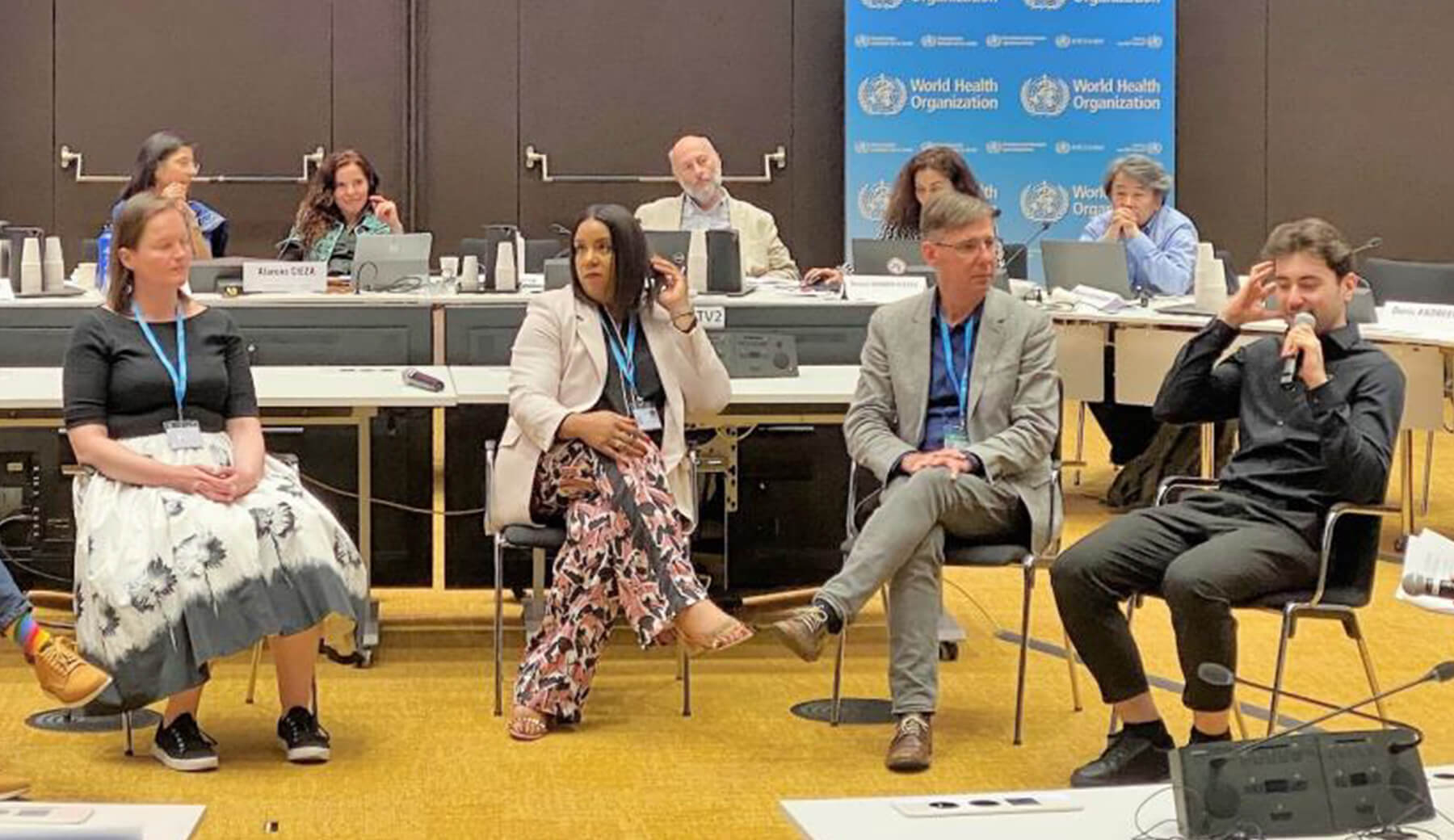Designing for accessibility has become an increasingly important topic in the game industry, helping standardize features that remove barriers for players with physical and cognitive impairments. This June, the World Health Organization (WHO) invited DigiPen Department of Music Principal Lecturer Brian Schmidt to its headquarters in Geneva, Switzerland to explore a very different kind of accessibility question — how developers might prevent games from causing impairments in players.
Started in 2015, the WHO’s Make Listening Safe initiative was launched to “realize a world where people of all ages can enjoy recreational listening without risk to their hearing.” In previous years, the initiative’s annual summit in Geneva had surveyed methods to reduce the risk of hearing loss resulting from personal music devices and live concerts, but this year, the WHO shifted focus to video games for the first time. Schmidt, who helped take games to the GRAMMYs, was invited to Switzerland by the WHO to lend his industry perspective to panels and workshops exploring ways to protect player hearing health.
Although Schmidt found the WHO’s proposal a novel challenge, the topic of safe listening had actually come up once before in the very early days of his 35-year career in the game industry. “We were trying to figure out ways to eliminate the loudness wars in arcades at the time,” Schmidt says. “We thought about putting microphones in the arcade games that could detect the ambient room level, so they could turn themselves up slightly if it was really busy, but then turn themselves back down if it was quiet.”
As Schmidt explains, maintaining hearing health is all about “dosage over time.” Our ears can tolerate loud noises for short durations, but prolonged, repeated exposure dramatically increases the risk for hearing loss. “There’s nothing inherently more dangerous about games than watching a movie, except that people generally don’t spend 25 hours a week watching movies,” Schmidt says. “A League of Legends, Call of Duty, Destiny, or Fortnite player who is playing competitively might be doing just that, while wearing headphones.”
During a panel in Geneva, Schmidt was joined by a professional Counter-Strike esports player who lent some interesting perspective to the proceedings. “Their paycheck depends on winning, which means it also depends on them hearing these very soft, subtle footstep sounds well,” Schmidt says. “If you play really loud so you can hear these footsteps, the side effect of that is, when you fire your weapon or a grenade goes off next to you, it’s really, really loud.”

The summit served as a first step in the conversation, one Schmidt is bringing to the rest of the industry to work on creating recommended practices together. Schmidt says one very early thought he had, prompted by the Counter-Strike player’s presentation, could be something like a “Tournament Mode” for audio in esports games. “It means you need to be more cognizant of how players are going to be playing these games competitively,” Schmidt says. “For Counter-Strike, maybe Tournament Mode means you bring those footstep sounds up in the mix.”
One challenge, especially for those working in virtual reality, is balancing the ever-present push for player immersion with the WHO’s newer push for safe listening. “The WHO can’t come in and say, ‘Change the content of your games.’ As developers, we’re trying to figure out what we might be able to do to still get our vision across and do it justice, but also have it so that players can play for longer periods of time without risking hearing damage,” Schmidt says. “Are there subtle ways that we can change how we present our games to the player?”
While certain accessibility-adjacent features like a tournament mode could provide a solution on the software end of the equation, the WHO’s invite also prompted Schmidt to reach out to hardware developers as well. The initial response to the WHO’s challenge was encouraging. “I reached out to the hardware manufacturers to say, ‘Hey, this isn’t something we’ve traditionally thought of, but are there ways we can look at this from a hardware perspective,” Schmidt says. “Their initial response was pretty positive and that it seemed like a natural thing we probably should start thinking about as an industry.”
As a board member of the Game Developers Conference, the founder of GameSoundCon, and of course, an instructor at DigiPen, Schmidt says his next step is raising the issue with the community. “We’re still only in the beginning, fact-finding stages,” Schmidt says. “But that’s kind of exciting!”
